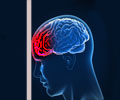New study recognizes specific neurological changes based on how much force is applied during traumatic brain injury.

‘New study recognizes specific neurological changes based on how much force is applied during trauma.’
Read More..




According to the Centers for Disease Control and Prevention, about 2.8 million TBI-related emergency department (ED) visits, hospitalizations and deaths occurred in the United States in 2013 alone. Every day, 153 people in the United States die from injuries that include TBI.Read More..
This first-of-its-kind study used x-ray diffraction to examine the changes to myelin, the fatty material that wraps around nerve cell projections in the brain and other parts of the body. The study looked at the optic nerves of rats that experienced a range of forces. Starting with no force and working upwards, researchers detected the exact force at which a change in the myelin structure occurred. The changes were tiny, less than a nanometer (a billionth of a meter) but they consistently occur at the same small load of force. What is more, the researchers were able to measure just how much the myelin sheath changed - reflecting the kind of change that occurs in head trauma.
As a result of this work, researchers have a better understanding of what kind of experience, or injury, leads to what kind of damage in the myelin - helping to visualize injuries based on the smallest force necessary to cause it. This information may be critical to knowing when someone has an injury after an accident but before symptoms emerge, and helps supports the decision of when and how to treat them.
"Through this research, we've been able to detect specific changes that have never been measured before," said Joseph Orgel, professor of biology and biomedical engineering, Illinois Institute of Technology. "While more research is needed to develop ways to treat these injuries, identifying the crux of the problem the impacts that specific forces have on the brain is an important first step in TBI detection, treatment, and prevention."
The project was supported by grants from ARL and National Institute of General Medical Sciences of the National Institutes of Health.
Advertisement
Source-Eurekalert















